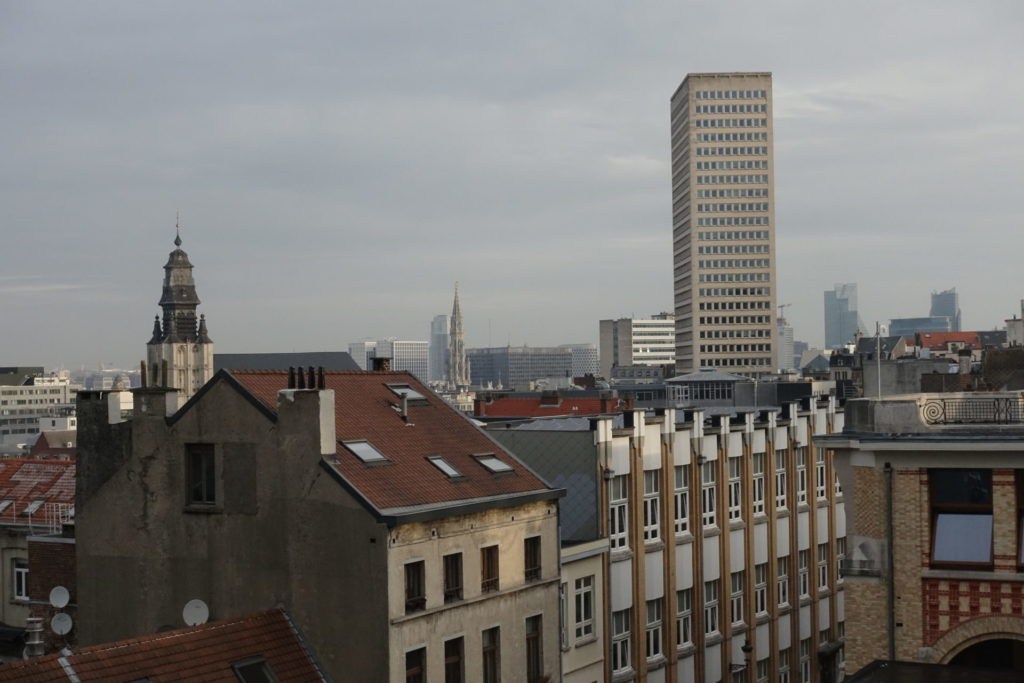The results of the largest ever citizen survey on air quality in the Belgian capital reveal that pollution in Brussels falls often along income lines, with the city’s most disadvantaged and vulnerable households breathing air of a markedly different quality from wealthy residents.
The study mapped air quality throughout the city, with some neighbourhoods scoring “excellent” while others scored “extremely poor,” and unsurprisingly to researchers, those results lined up frequently with socio-economic backgrounds.
Similar results were found in a study done last year that concentrated on available green space in the city, noting a correlation between wealth and availability of parks.
While the latest data show that air quality in Brussels has improved considerably in recent years, there were big disparities from neighbourhood to neighbourhood, and even street to street.
An interactive map was created using the data and shared with Bruzz (Brussels), De Standaard (Flanders) and Le Soir (Wallonia). The written report is available in English.
On the interactive dot map, each measuring point was assigned a colour corresponding to the measured value: blue dots mean “very good” (0-15 µg/m3) and black dots mean “extremely poor” (>50 µg/m3).
Deux projets de #citizenscience sur la région de #Bruxelles en période Covid, pour le même polluant, mais l'un sur 12 mois @chercheursdair_ et l'autre sur 1 mois @curieuzenair. Quelle comparabilité des résultats? (attention: les couleurs ne correspondent pas aux mêmes valeurs !) pic.twitter.com/PJ8f4fbWsi
— Delphine Misonne (@DelphineMisonne) March 18, 2022
“It is definitely not pleasant to hear that you live or work at a red location,” said Professor Filip Meysman (UAntwerpen), coordinator of CurieuzenAir.
“But that is also the purpose of our research: to make hotspots of air pollution visible and ensure that local policymakers can improve the traffic situation.”
European limits exceeded in places
To collect the data, around 3,000 Brussels residents measured the concentration of nitrogen dioxide (NO2) in the air on their street between 25 September and 23 October 2021, using a measuring device placed on their home’s façade.
The lowest NO2 concentration (6.2 µg m-3) was measured in the middle of the Sonian Forest. The lowest concentration in a residential area (8.1 µg m-3) was measured on a façade in the Rue Chant d'Oiseaux in Anderlecht, which researchers say is a remarkable measurement for an urban environment, where measured values below 10 µg m-3 are usually less frequent.
Related News
- A healthier city: Brussels seeks residents' advice to improve air quality
- No fresh air: Brussels parks not as green as they seem
This indicates that there are residential areas in Brussels with very good air quality, but the outliers are a troublingly stark contrast.
The highest value (60.5 µg m-3) was recorded along the busy Boulevard de Nieuport (Nieuwpoortlaan), and there are also measuring points along the inner ring road that exceed 50 µg m-3. The European Commission’s limit is 40 µg/m3.
‘Canyon effect’ of skyscrapers traps pollution
“The highest nitrogen dioxide concentrations are reached in places with heavy traffic. These concentrations are amplified by a ‘canyon effect,’ the presence of buildings on either side of the street, which causes the pollutants to linger in the street,” explained Olivier Brasseur, air quality expert at Brussels Environment.
“Surprisingly, there are different NO2 concentrations within one and the same street. This can be explained by the structure of the street, which gives the wind more or less free play in some places. In addition, stop-and-go traffic at intersections and traffic jams during the morning and evening rush hours cause increased emissions and high peaks.”
The European limit is exceeded at 1.4% of the CurieuzenAir measurement sites, meaning 17,000 inhabitants of Brussels are exposed to very high concentrations of NO2 at home and/or at work.

Photo by Helen Lyons/The Brussels Times
But researchers were surprised that the number was so low: two years ago, it was estimated to be around 10%, while ten years ago, 50% of the Brussels population was breathing air above the standard – meaning the air quality in Brussels is improving.
As to why, researchers point to less car traffic during the pandemic, less-polluting vehicles like electric ones, increased bicycle usage and LEZ (low emission zones) across the city.
“Thanks to all the citizens who participated in the project, we have gathered an unprecedented dataset on air pollution in Brussels, which helps us to better understand the problem in our city,” said Alain Maron, Brussels Minister for Climate Transition, Environment, Wellbeing and Health.
“Although we see that the situation is slowly improving, the high concentrations are still unacceptable and require urgent and thorough action. We need to ensure that everyone in the city, wherever they live and whatever they earn, can breathe clean, healthy air.”

